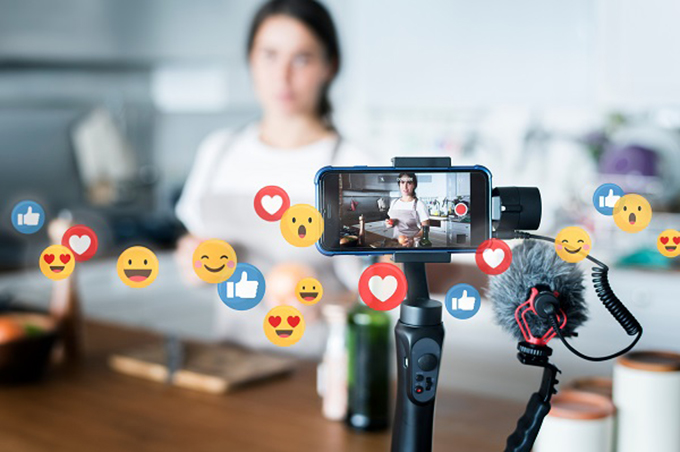
Advertising has always collaborated with popular characters to publicize brands and products. Today, some of the popular characters are the influencers , who spread their content on social networks, an interactive and close stage with diverse audiences eager to know their opinions or lifestyles. Nothing escapes his interest: fashion, technology, cryptocurrencies, travel…
In the digital world, minors have a great role. They invest a lot of time and seek to satisfy their needs for leisure and socialization. But they are also exposed to content that mixes persuasion, information and entertainment, and requires intelligent and critical management to discern and share what they consume.
These hybrid contents are at the heart of influencer marketing, whose protagonists especially attract minors. The connection and identification that they can feel for these celebrities raises some concerns given the influence they can exert.
Although in Spain there is a self-regulatory code that encourages the identification of sponsored content, it is not always complied with. And globalization means that exposure to global content does not always include the appropriate labels. Therefore, the user’s ability to deal with this reality is important.
Is the teenager a naive user?
Are minors aware of the persuasive intent of these contents? Our research project analyzes the way in which Spanish adolescents from 11 to 17 years old assume the promotion of products as part of the essence of the influencer . They know that these celebrities use persuasive strategies, praise products as part of their work and are paid for it.
The profession or origin of the influencers helps them assess the credibility of their commercial speech. The link with the product they advertise is decisive: it is not the same for an athlete to promote a pair of shoes as for someone who has nothing to do with the sports world.
They also know that influencers sweeten their posts and show the softer side of their lives. They know that they use resources such as filters to embellish reality. Age, maturity and experience are also key. Certain elements help the little ones to awaken their critical capacity: the repetition of phrases or the identification of content as advertising, among others.
They know the falsehoods, but not the effects
Teenagers relativize the use of these techniques and accept them as typical of influencers and social networks. Moreover, they themselves incorporate them into their digital routines. Thus, it is a common practice to have two profiles on the same platform: one as a showcase to show their “public life” with content for family and acquaintances, and another private and intimate one for the closest circle.
It is clear that adolescents are not naive about the content generated by influencers and exercise some critical thinking. They recognize advertising and are aware of the rules of the commercial game, which they assume as their own without reflecting on the implications.
Minors, therefore, apply critical thinking at a cognitive and affective level, but hardly contemplate the moral dimension. They do not refer to exaggeration, the use of filters or personal data to segment advertising.
Minors take it for granted that influencers sell products, but they do not wonder about the consequences that this may have, especially for more vulnerable people. This deeper reflection is beyond their understanding and does not seem to concern them. They seek the immediate satisfaction of their social and leisure needs in a commercialized digital context.
Ethical digital literacy
Given this scenario, digital literacy should include the ethical dimension that helps minors to discern between the goodness or badness of actions. Also to reflect on their impact on themselves, on others and on society. Only in this way can full critical thinking be achieved, essential in a digital environment where content takes on diffuse forms and constantly changes.
It is of little use to focus solely on limiting screen time. The ubiquity of technology makes this measure obsolete, which by itself does not prepare the minor to face digital reality in a critical way. The experts encourage us to ask ourselves not about how much , but about what for . It is the reasons for use and the intentions behind the actions that will determine their ethical character.
The humanistic optics of the digital
The person must be put at the center and the digital immersion should be carried out not only from a technical point of view, but also from a humanistic and integral point of view. It is about contemplating the ethical dimension of the use of technology. We must understand that technology connects human beings, and that this requires an ethical vision to promote coexistence and respect.
Influencers , social networks, filters, exposure, “likes”… educators must know and understand the media reality in which minors live. Only in this way will it be possible to accompany them in a world of ephemeral tendencies, but in which truth and identity always remain.
Author Bios: Beatrice Feijoo is Professor of Advertising at the Faculty of Business and Communication at UNIR – International University of La Rioja and Charo Sadaba Chalezquer is a Full Professor Department of Marketing and Communication Companies at the University of Navarra
